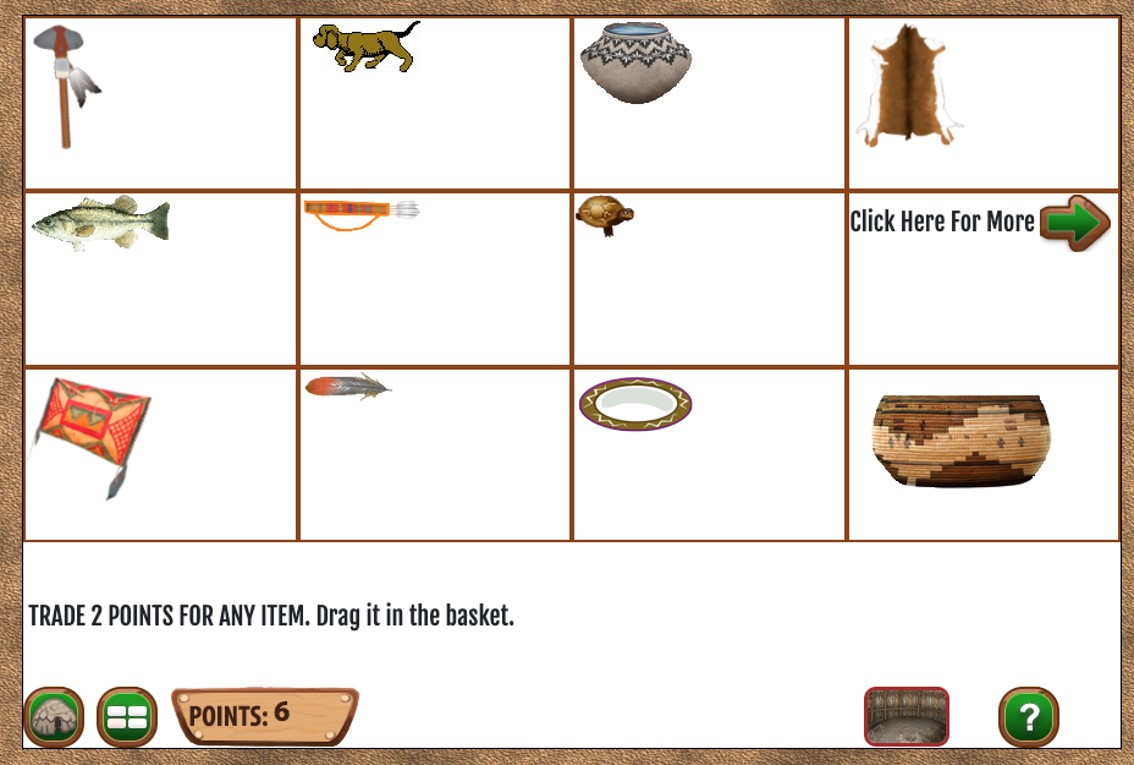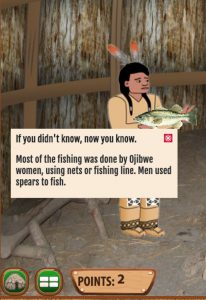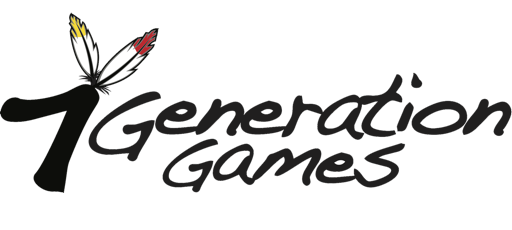Standard
National Curriculum Standard for Social Studies
NCSS: The study of people, places, and environments enables us to understand the relationship between human populations and the physical world.
Summary
Students learn where people and places are located and why they are there. They study the causes, patterns and effects of human settlement and migration, learn of the roles of different kinds of population centers in a society, and investigate the impact of human activities on the environment.
Activity: Customize your Wigwam!
The player should now have enough points to get a wigwam and at least two items to supply their wigwam.
- Click on the wigwam icon on the bottom left. This will play a video on how a wigwam was built, followed by a second video that briefly discusses that trading existed between and within tribes long before the settlers came. The player then has an option to trade points for items for their wigwam.

Clicking on the wigwam room in the bottom right corner will bring the player to their wigwam. Purchased items appear here for decoration and interaction.

Clicking on an item will bring up a text box with information on how that item was used or obtained by the Ojibwe people.
Some items also perform actions when clicked. For example, the parfleche opens to show pemmican inside; when clicked, the dog walks across the wigwam.
Games
Trading for a Wigwam incorporates our video game, Making Camp.


Pingback: 5 Minute Lessons from Making Camp - Educational Resources for Grades 3-8
Pingback: Ojibwe hunting and Multiplication - Educational Resources for Grades 3-8